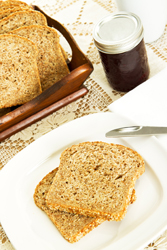Improving consumer acceptance of gluten-free products
A number of challenges besets the growing market for gluten-free products. These include high starch content, low-fibre and -protein contents, shorter shelf life, texture issues and nutrient losses due to lengthier cooking times. The GLUTENFREE project carried out a number of scientific and technological development activities to address these problems, helping both the demand and supply sides. several project studies generated insights into consumer preferences, acceptance and needs. In addition, the effects of a range of proteins, hydrocolloids and fibres on the physico-chemical properties of breads and pasta that relate to structure were investigated. Results provided the basis for target-oriented product development and optimisation, as well as the development of a wide range of recipes for new gluten-free prototypes. The latter was realised through collaboration between the research and technological development (RTD) and industry partners. research results were also used to implement new gluten-free food prototypes in the production lines of small and medium-sized enterprise (SME) project participants, as well as in the production of high-quality gluten-free bakery products and pasta. The latter provided the base for the scale-up and production of food prototypes for a final consumer acceptance study. The results of this study indicated high consumer acceptance of some breads (oat and linseed bread) and the need for improvements in other breads, especially pizza bases. other project activities included the screening of raw materials and ingredient selection, process development for the production of protein ingredients with good viscoelastic properties. Bioengineering for structural and nutritional value of gluten-free foods included use of specific lactic acid bacteria. most GLUTENFREE spaghetti prototypes were well accepted by consumers, with one product enjoying comparable status with the gluten-free market leader. Considered as ready for market launch, by the end of the project this product had been commercialised by a pasta producer. project outcomes have the potential to help SMEs generate extra annual turnover and additional employment. There are benefits for society too: coeliac patients and health-conscious consumers will have a wider range of tastier foods to add to their diet.







